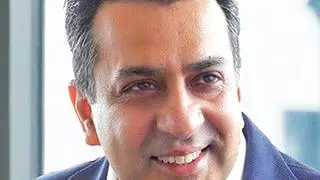Pushed to the wall after tower radiation concerns, the Cellular Operators’ Association of India (COAI) has begun a nationwide campaign, asking the States to come out with a telecom infrastructure policy, prescribing uniform guidelines.
A team comprising COAI and some industry representatives have met Sanjay Jaju, Principal Secretary (Information Technology and Communication) and submitted a memorandum, requesting the State to look into the issue.
Vikram Tiwathia, Associate Director-General of COAI, told Business Line that absence of a policy was playing its bit in curtailing in the spread of strength of mobile signals.
High and irrational rentals and growing resistance to establish towers in busy areas were having an adverse impact on the quality of services.
He said Andhra Pradesh stood at 10{+t}{+h} position in terms of tele-density as of October 2012 with 81 (number of connections for every 100 people). New Delhi topped the list with 230 followed by Tamil Nadu (116), Himachal Pradesh (107) and Punjab (106). The overall tele-density for the country was put at 77.
The rural tele-density in Andhra Pradesh (47) is far lower than that of Orissa (64), Karnataka (52) and Rajasthan (68). However, the tele-density is skewed in favour of urban areas that reported tele-density of 162 as against 39.80 in rural areas.
“For three months in a span of six months, Andhra Pradesh reported a decline,” Vikram said, quoting the figures provided by mobile operators.
“The Andhra Pradesh Government has responded well to our suggestions. They have promised to prepare a infrastructure policy for the telecom sector. We expect this initiative would remove bottlenecks in establishing the towers,” he said.
Reiterating COAI’s stand that radiations levels were well within the internationally and nationally accepted bars, he wanted the Government to allow tower firms and telecom operators to locate the towers on its buildings.
> kurmanath.kanchi @thehindu.co.in







Comments
Comments have to be in English, and in full sentences. They cannot be abusive or personal. Please abide by our community guidelines for posting your comments.
We have migrated to a new commenting platform. If you are already a registered user of TheHindu Businessline and logged in, you may continue to engage with our articles. If you do not have an account please register and login to post comments. Users can access their older comments by logging into their accounts on Vuukle.